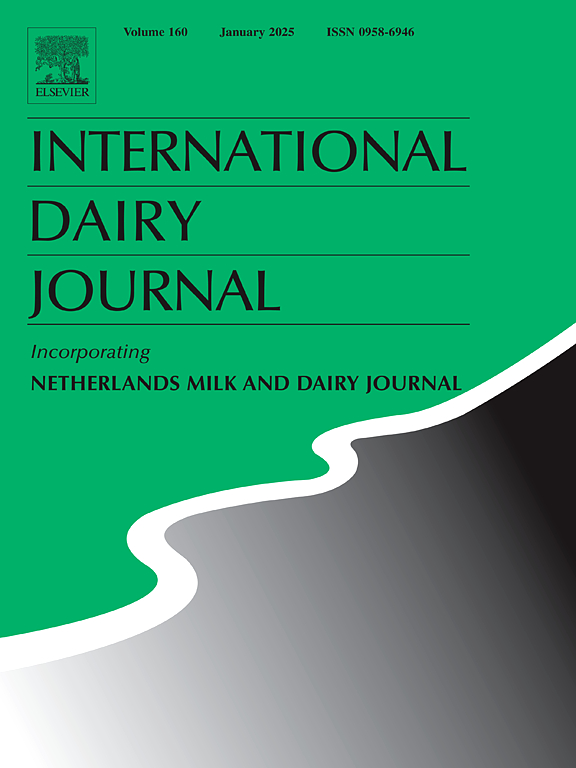Preparation of milk derived oligosaccharides from whey permeate for use in infant milk formula
IF 3.4
3区 农林科学
Q2 FOOD SCIENCE & TECHNOLOGY
引用次数: 0
Abstract
The nutritional profile of a milk oligosaccharides (MOS) ingredient, derived from whey permeate, was assessed compared to a galacto-oligosaccharides (GOS) ingredient, produced from purified lactose. Significantly higher (P < 0.05) levels of 3′-sialyllactose (3′-SL) and 6′-sialyllactose (6′-SL) were present in MOS due to its sourcing from whey permeate compared to the GOS ingredient. MOS also contained higher levels of protein, minerals, vitamins and other nutritional components compared to the GOS ingredient. MOS displayed lower levels of GOS and higher levels of lactose, glucose and galactose than the GOS ingredient due to differences in manufacturing conditions. A model infant milk formula (IMF) containing MOS displayed significantly higher (P < 0.05) levels of 3′-SL and 6′-SL compared to IMF containing the GOS ingredient. These sialylated oligosaccharides contribute to the more complex structural diversity of MOS compared to GOS, thereby potentially supporting reported microbiota and immune benefits for infants.
从乳清渗透液中制备用于婴儿配方奶粉的乳源低聚糖
从乳清渗透液中提取的牛奶低聚糖(MOS)成分与从纯化乳糖中提取的半乳糖低聚糖(GOS)成分的营养成分进行了比较。P <;与GOS成分相比,MOS中存在3 ' -唾液基乳糖(3 ' -SL)和6 ' -唾液基乳糖(6 ' -SL),这是因为它来自乳清渗透物。与GOS成分相比,MOS还含有更高水平的蛋白质、矿物质、维生素和其他营养成分。由于生产条件的差异,MOS中GOS含量较低,而乳糖、葡萄糖和半乳糖含量较高。含有MOS的模型婴儿配方奶粉(IMF)的P <;与含有GOS成分的IMF相比,3 ' -SL和6 ' -SL的含量为0.05)。与GOS相比,这些唾液化的低聚糖有助于MOS更复杂的结构多样性,因此可能支持报道的微生物群和婴儿免疫益处。
本文章由计算机程序翻译,如有差异,请以英文原文为准。
求助全文
约1分钟内获得全文
求助全文
来源期刊

International Dairy Journal
工程技术-食品科技
CiteScore
6.50
自引率
9.70%
发文量
200
审稿时长
49 days
期刊介绍:
The International Dairy Journal publishes significant advancements in dairy science and technology in the form of research articles and critical reviews that are of relevance to the broader international dairy community. Within this scope, research on the science and technology of milk and dairy products and the nutritional and health aspects of dairy foods are included; the journal pays particular attention to applied research and its interface with the dairy industry.
The journal''s coverage includes the following, where directly applicable to dairy science and technology:
• Chemistry and physico-chemical properties of milk constituents
• Microbiology, food safety, enzymology, biotechnology
• Processing and engineering
• Emulsion science, food structure, and texture
• Raw material quality and effect on relevant products
• Flavour and off-flavour development
• Technological functionality and applications of dairy ingredients
• Sensory and consumer sciences
• Nutrition and substantiation of human health implications of milk components or dairy products
International Dairy Journal does not publish papers related to milk production, animal health and other aspects of on-farm milk production unless there is a clear relationship to dairy technology, human health or final product quality.
 求助内容:
求助内容: 应助结果提醒方式:
应助结果提醒方式:


